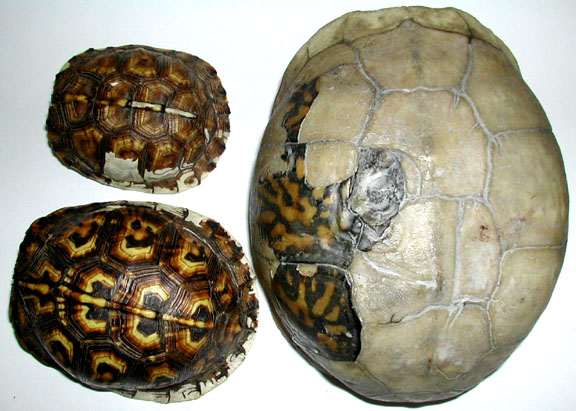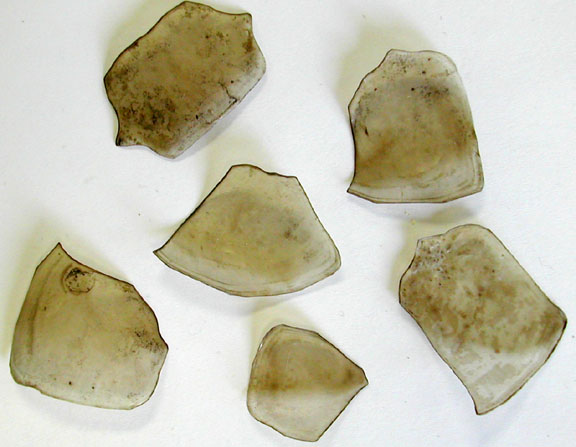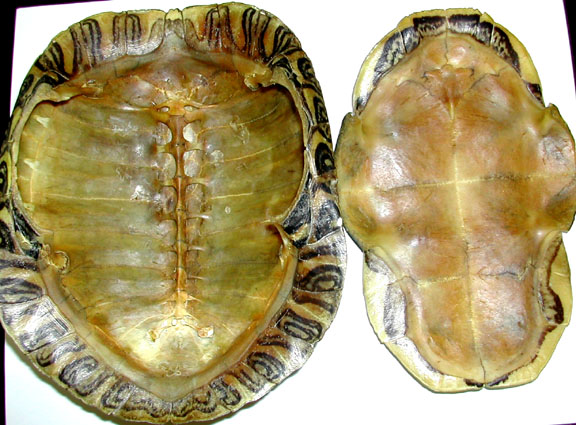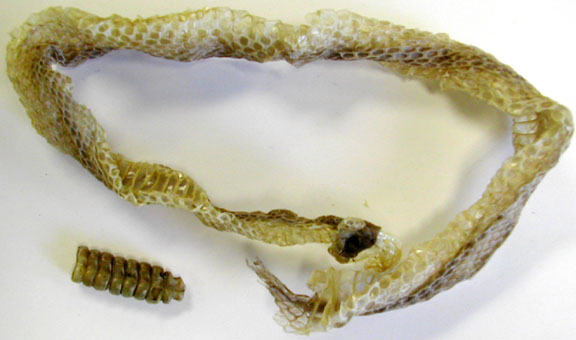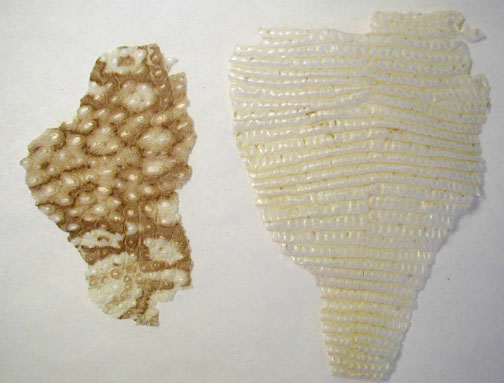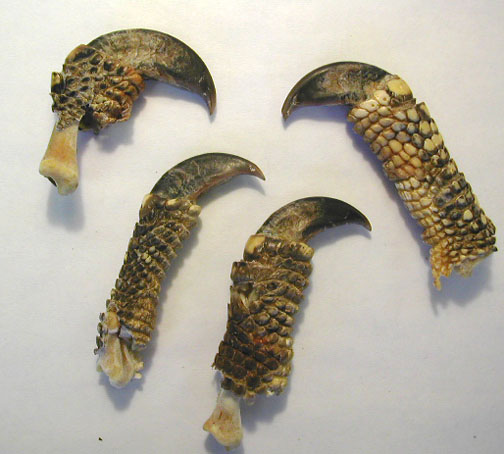|
Primary flight
Feathers on a bird's wingare asymmetrical and the
barbules have hooks (not visible) that link adjacent barbs
together to form the vane of the feather. All bird feathers
are epidermally derived & made of keratin.
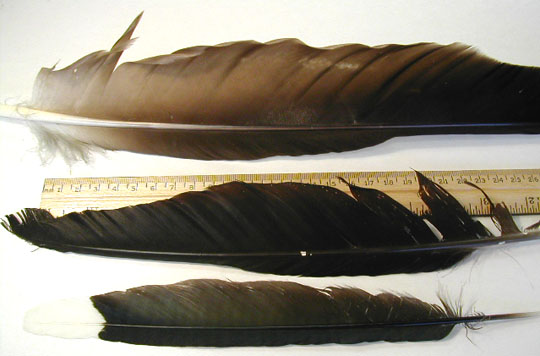
|
Contour feathers
from a flightless bird (Emu) lack hooks on the barbules, so
the barbs remain separated on the shaft.

|
|
Sampler of some of the
color variation in bird feathers.
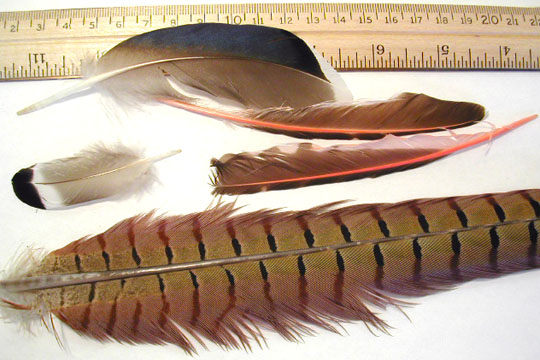
|
Semi-plume Feathers are
below the contour feathers on a bird & they aid in
insulation.

|
|
Penguin wings
are covered with numerous, but minute feathers that are used
for insulation, but no longer aid in flight or
swimming.
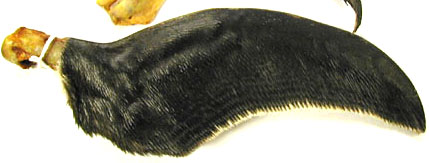
|
Closeup of a small
semi-plume with a down feather attached.

|
|
Uropygial gland
of a pigeon.

|
Bird skin - low power
showing epidermis, feather follicles & the delicate
dermis.
Bird feather follicle - high
power showing the formation of feather barbs & the
chromatophores.
|
|
Ungulate Horns -
showing Pronghorn (forked), impala? & bighorn sheep. The
horns have a bony core (on skulls). The pronghorn sheds its
horn annually but the other horns continue to grow
throughout the life of the animal.
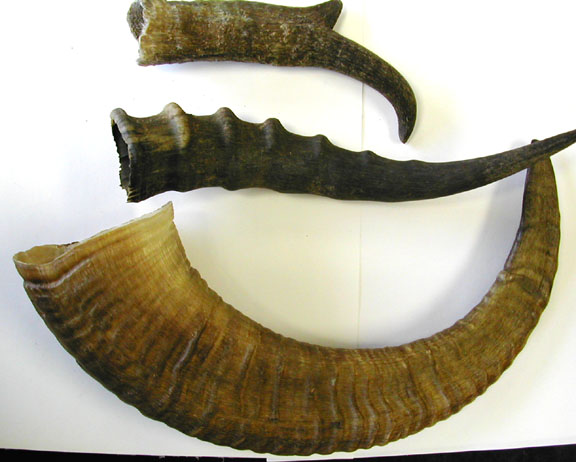
|
Rhino Horn -
These views are of portions of the lower end of the horn.
The horn is made of compact keratin fibers.
 
|
Rhino Horn -
full view of a very long rhino horn, one of a pair that were
donated to us by Mus. of History & Industry.
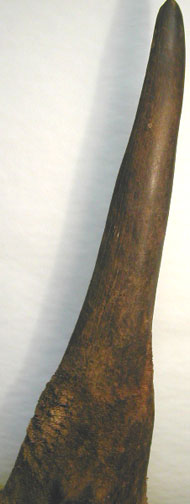
|
|
Beaver Tail is
covered by epidermal scales (keratin) with a few sparse
hairs (not visible).

|
Beaver Fur - showing
the guard hairs, note the circular patch where guard hairs
have been cut to expose the underfur.

|
Beaver Fur - The
guard hairs have been pulled back to expose the denser,
shorter underfur.

|
|
Central section of
Armadillo body showing its armor plating.
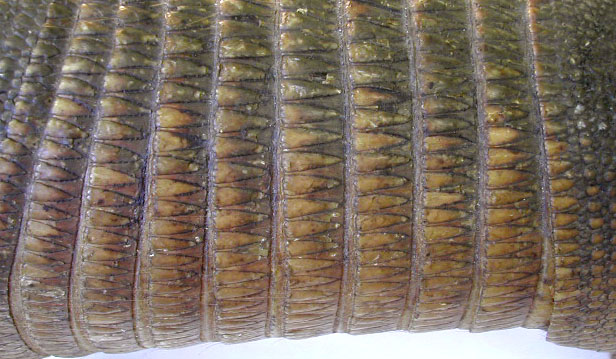
|
Armadillo Shell
- in a small portion of the armadillo's body. Keratin scales
cover its shell, but beneath the keratin there are plates of
bony (osteoderms). The osteoderms show up as the lighter
regions where the keratin scales were removed.

|
Armadillo Shell
- showing some of the hairs that grow between the
epidermal scales.

|
|
Porqupine Quills are
made of keratin & are thus simply highly modified
hairs.
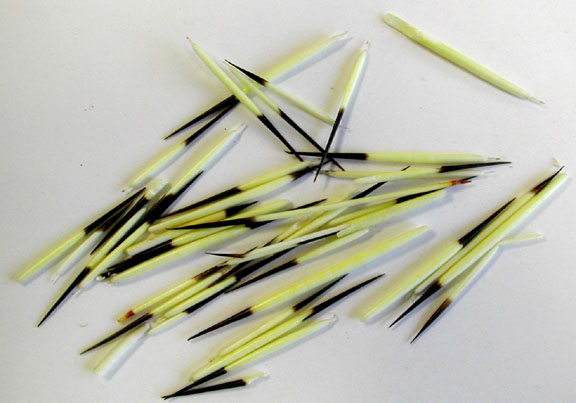
|
Horse Hoof -is covered
with keratin & is a homolog to the claws or fingernails
of other amniotes.

|
|
|
Human Palm - this
part of our skin shows "ridges" that form the whorls
& patterns on hands. The stratum corneum layer of the
epidermis is very thick, semi-transparent & contains a
spiraled duct for an eccrine sudoriferous sweat gland. The
remaining epidermis is dark red while the dermis shows lots
of connective tissue stained green.

|
Human Skin - Eccrine
Sudoriferous Gland - epidermal cells form small coiled
tubular glands that produce the watery fluid we call true
sweat. This fluid is released to help the body cool off & thus prevents overheating.

|
Human Dermal
Papilla at high power shows a network of capillaries
inside. These blood vessel s supply nutrients to the
overlying epidermis.

|
|
Human Axillary
(armpit) Skin has a few of these apocrine sudoriferous
glands that have larger lumens than the eccrine sudoriferous
glands. Apocrine sudoriferous glands produce a more sticky
sweat that contains pheromones.
|
Human Skin - Eccrine
Sudoriferous Gland in this case it is surrounded by
adipose tissue. Note the tiny lumen (opening) in different
sections of the gland.

|
Human Adipose
Tissue

|
|
Human Scalp -numerous
hair follicles are visible at low power.
|
Hair follicles
at high power.
|
Sebaceous (oil)
gland at high power.
|
|
Mammary Gland -
Active at high power to show enlarged
alveoli.
|
Mammary Gland -
inactive at low power showing skin & lymph node near
mammary tissue.
|
Mammary Gland -
inactive at high power.
|

